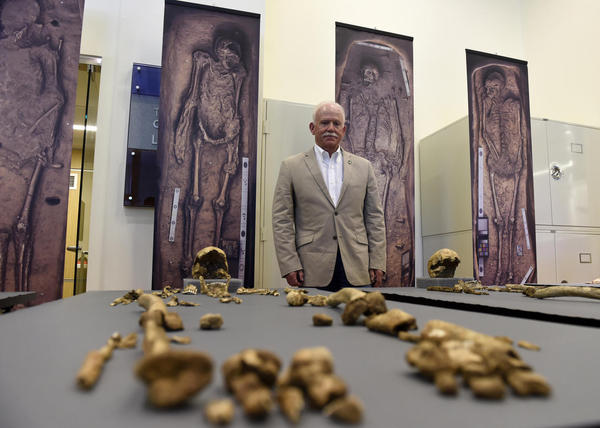-
Tips for becoming a good boxer - November 6, 2020
-
7 expert tips for making your hens night a memorable one - November 6, 2020
-
5 reasons to host your Christmas party on a cruise boat - November 6, 2020
-
What to do when you’re charged with a crime - November 6, 2020
-
Should you get one or multiple dogs? Here’s all you need to know - November 3, 2020
-
A Guide: How to Build Your Very Own Magic Mirror - February 14, 2019
-
Our Top Inspirational Baseball Stars - November 24, 2018
-
Five Tech Tools That Will Help You Turn Your Blog into a Business - November 24, 2018
-
How to Indulge on Vacation without Expanding Your Waist - November 9, 2018
-
5 Strategies for Businesses to Appeal to Today’s Increasingly Mobile-Crazed Customers - November 9, 2018
Remains of 4 early colonial leaders discovered at Jamestown
Researchers have recently identified four men who were buried at historic Jamestown, the first permanent British settlement in the Americas.
Advertisement
The four burial sites were uncovered in the earthen floor of what was Jamestown’s historic Anglican church from 1608, a team of scientists and historians announced Tuesday. “It packs in the bones”, says Douglas Owsley, who heads the department of archaeology at the Smithsonian National Museum of Natural History.
About a third of their remains had not decomposed, the scientists said, adding that their burial near the church choir indicated their high social status.
The men were identified as the Reverend Robert Hunt, Captain Gabriel Archer, Sir Ferdinando Wainman and Captain William West. Researchers realized this when they discovered the pattern of nails left behind in the grave after the wood deteriorated.
Archaeologists investigated the four burials in November 2013 and partnered with the Smithsonian to identify the remains.
The skeletons and archaeological materials were found beneath the chancel area of Jamestown’s 1608 church at the front of the structure where a communion table would have been located and where only elite members of the community would have been buried.
The research also provided new insight into life and death and the importance of religion in the Jamestown settlement in Virginia, about 80 miles (130 km) south of Washington, the Smithsonian said.
But times were rough; during a six-month period in 1609 known as the “starving time”, almost 250 people died at Jamestown. The three other men likely died after brief illnesses. Archer was also buried with a small silver box, known as a reliquary, containing bone fragments and pieces of a lead container for holding holy water atop his coffin. Gabriel Archer and William West, were found with artifacts that piqued the interest of the archaeologists. Horn compared the find to the 2012 discovery of the lost grave of King Richard III in England.
A silver box found on top of one of the coffins suggests that Catholicism played a larger role in Jamestown than historians previously thought.
“It was a real kind of ah-ha moment for a lot of us”, he said. “Everyone thinks that people came to Jamestown to find gold and go home and live happily ever after”. A micro-CT scan revealed highly-decayed fragments of a military-leader’s sash in soil surrounding the body. The silk material was too delicate to remove from the dirt, so archaeologists removed an entire block of dirt for preservation. And two of them, kin of Sir Thomas West, the governor of Virginia, helped save a colony on the brink of collapse.
To identify the men, the archaeologists combined genealogical and historical documents from both England and the colonies, along with artifacts and analyses of the chemicals in the skeletons. Still they will work to complete more testing and potentially DNA analysis.
Advertisement
The archaeology team said the discovery is like a riddle they must figure out over time. “But these are men that were critical to who we are in terms of America today”.





























